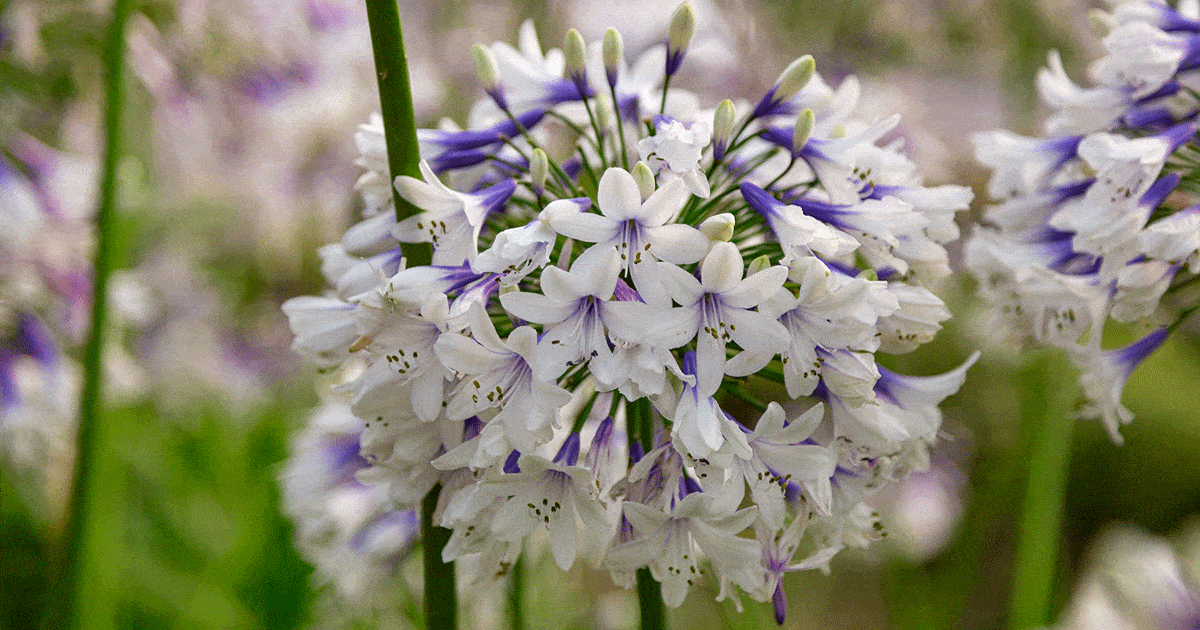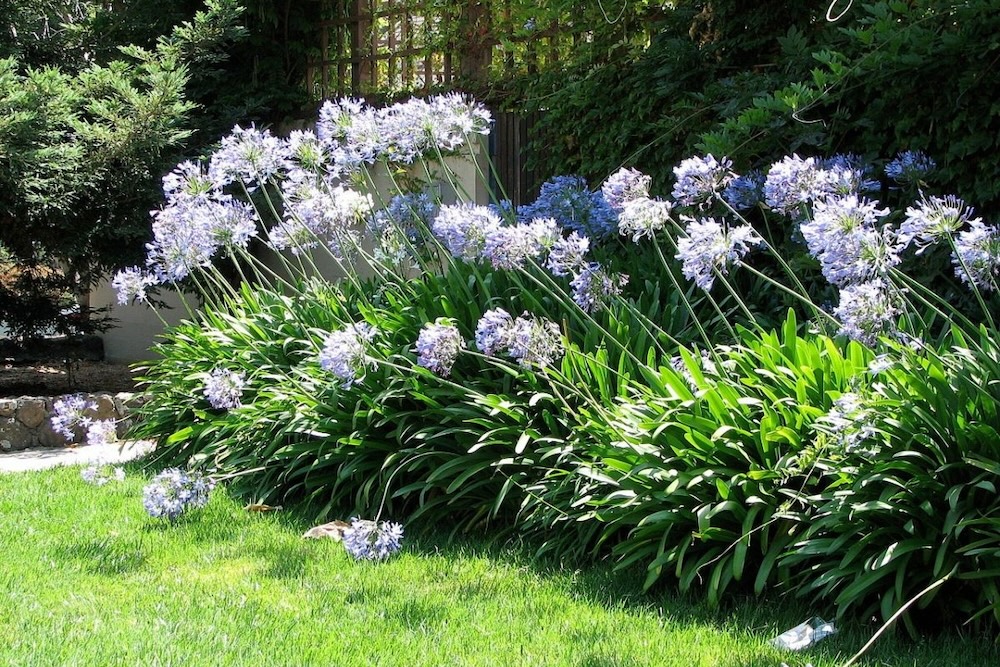Usual Agapanthus Issues and Exactly How to Resolve Them
Usual Agapanthus Issues and Exactly How to Resolve Them
Blog Article
Releasing the Secret to Effective Agapanthus Growing: Idea for a Flourishing Yard
In the realm of gardening, growing agapanthus efficiently needs a tactical approach that incorporates different facets of plant treatment. By recognizing the subtleties of agapanthus cultivation, one can create a setting where these plants prosper and flower abundantly.
Growing Agapanthus: Best Practices
When growing Agapanthus, proper dirt preparation is crucial for making sure successful growth and advancement of these attractive blossoms. Agapanthus, frequently known as Lily of the Nile or African lily, grows in well-draining soil with a somewhat acidic to neutral pH level - Agapanthus. Prior to planting, it is critical to change hefty clay soils with raw material such as garden compost or peat moss to enhance water drainage and supply essential nutrients for the plants
To plant Agapanthus, select a location that obtains full sunshine to partial color, as this will certainly advertise healthy growth and bountiful flowering. Dig an opening twice the size of the plant's origin round and position the Agapanthus at the same deepness it was formerly growing. Carefully backfill the opening with dirt, pushing down securely to remove any type of air pockets around the origins.
Water the newly planted Agapanthus thoroughly and continue to keep the soil evenly damp, specifically throughout the plant's energetic expanding season. Agapanthus. Applying a balanced plant food once a month can further support the plant's growth and blooming. By adhering to these finest techniques for planting Agapanthus, you can create a sensational display screen of these captivating flowers in your yard
Suitable Soil Conditions for Agapanthus
For optimum development and flowering success of Agapanthus plants, making sure the soil conditions are optimal is vital. Agapanthus likes soil that is abundant in nutrients, so integrating a balanced fertilizer during the expanding season can promote healthy and balanced development and vivid flowers.

Watering and Feeding Tips
To make sure healthy growth and vibrant blooms, appropriate watering and feeding methods are vital for successful Agapanthus cultivation. Agapanthus plants benefit from normal watering, particularly during the expanding period.
When it concerns fertilizing Agapanthus, a well balanced plant food with equal parts nitrogen, phosphorus, and potassium can be used in the spring to advertise healthy development and flowering. Slow-release plant foods are excellent for providing nutrients gradually over an extensive period. Avoid over-fertilizing, as this can bring about extreme foliage development at the cost of blooms.
In addition, integrating natural matter like compost right into the soil can enhance nutrient degrees and improve dirt structure, assisting in the general wellness of the Agapanthus plants. By complying with these watering and feeding suggestions, garden enthusiasts can ensure their Agapanthus plants grow and produce magnificent screens of flowers.
Trimming and Deadheading Techniques
Correct pruning and deadheading strategies play an important duty in preserving the wellness and visual appeals of Agapanthus plants, enhancing the vital techniques of watering and feeding for successful growing. Trimming Agapanthus involves getting rid of spent flower heads, yellowing or dead leaves, and general shaping of the plant to advertise better growth. Deadheading, the process of getting rid of faded blossoms, not just boosts the plant's look but additionally encourages additional flowering.
When deadheading Agapanthus, it is recommended to trim off the blossom stem at the base using sharp, tidy shears. This procedure reroutes the plant's energy from seed production back right into root and foliage development, advertising a much healthier and much more durable plant. Normal deadheading can prolong the growing duration of Agapanthus and prevent self-seeding, which can result in congestion.
In terms of pruning, Agapanthus generally gain from a light trim after blossoming to clean the plant and motivate fresh growth. Cutting back the spent flower stems and removing any dead or damaged foliage helps maintain the plant's vitality and total look. Nonetheless, it is necessary to avoid reducing into the crown of the plant, as this can deteriorate its health and wellness.

Protecting Agapanthus From Pests and Diseases
Executing efficient pest and illness management methods is vital to guarding the wellness and vitality of Agapanthus plants in cultivation. One common pest that affects Agapanthus is the Agapanthus borer, a caterpillar that passages into the plant, causing damages to the blossoms and leaves.
Along with parasites, Agapanthus are vulnerable to conditions such as he said origin rot and fungal leaf areas. These concerns can frequently be protected against by guaranteeing appropriate drain and staying clear of overwatering. Affected parts of the plant must be without delay gotten rid of to prevent further spread if indications of illness show up. Fungicides might additionally be utilized as a therapy site link action, adhering to the producer's directions very carefully. By staying watchful and addressing pest and disease problems immediately, garden enthusiasts can aid their Agapanthus prosper and prosper.

Final Thought
Finally, successful farming of agapanthus needs appropriate growing techniques, perfect soil problems, appropriate watering and feeding, routine trimming and deadheading, and security from illness and parasites. By complying with these techniques and suggestions, garden enthusiasts can guarantee a growing yard loaded with gorgeous agapanthus blooms. Agapanthus. Keep in mind to keep consistent care and interest to information to advertise the wellness and longevity of these sensational plants
When growing Agapanthus, proper soil preparation is crucial for ensuring successful development and growth of these attractive blossoms.Water the freshly Get the facts grown Agapanthus thoroughly and continue to keep the soil uniformly moist, particularly during the plant's active growing period.For optimal growth and blooming success of Agapanthus plants, ensuring the dirt problems are ideal is crucial. When hair transplanting or growing Agapanthus, ensure the dirt is well-prepared to give the essential structure for the plants to develop themselves effectively. One typical insect that affects Agapanthus is the Agapanthus borer, a caterpillar that tunnels into the plant, creating damages to the blossoms and leaves.
Report this page